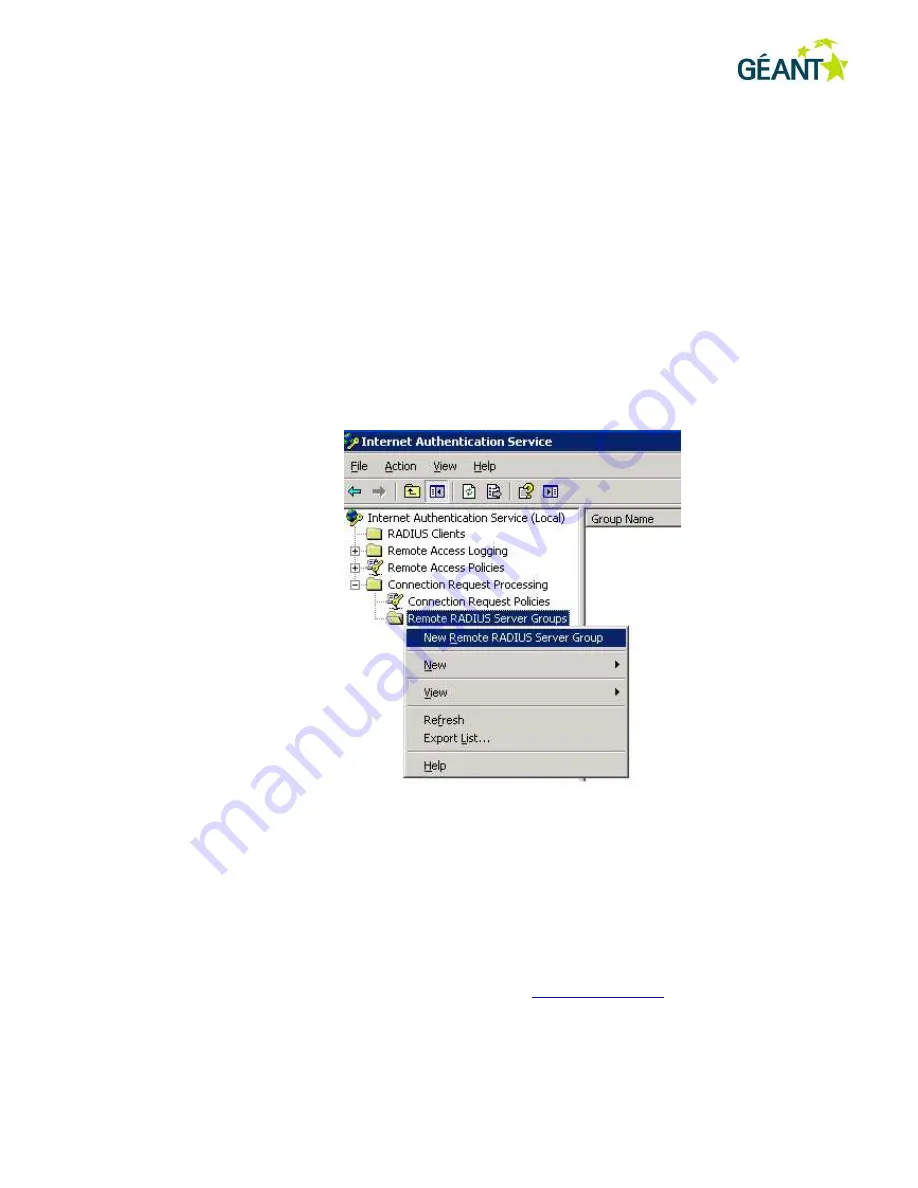
Step 5: Connection Request Policies
Connection Request Policies determine where authorisation shall take place according to certain criteria. One
policy may authenticate employees locally and forward all students to the RADIUS server associated with the
school domain, while another policy directs all other users to the eduroam core. Since the policies are handled
in a specific order, it is important that this is done correctly.
1. Users who are to be authenticated locally
2. Users who are to be forwarded to another RADIUS server (several of which can be configured)
3. All other users to be directed to eduroam
1.
Right-click on “Connection Request Policy” and select “New Connection Request Policy”.
2.
Click on “Next”
3.
Select “A custom policy”, fill in the Policy name (for example, “Local”, “School” or “eduroam”) and click
on “Next”.
4.
Click on “Add” to add criteria for the connection.
Eduroam determines where a user belongs by using the realm which is indicated when the user types
username@organisation. In spite of the apparent similarity, there is no connection between realm and e-mail
address. However, in most cases it is possible to use a realm corresponding to an e-mail address. The realms
used are often agreed in advance. If you have any queries, contact
.
An example of a realm:
Содержание 4402 - Wireless LAN Controller
Страница 23: ...23 Security Layer 3 shall be None ...
Страница 36: ...36 A 4 Default VLAN Now go to SECURITY SSID Manager and specify the default VLAN ...
Страница 43: ...43 Create a Connection Request Policy for every connection this RADIUS server is to serve ...
Страница 60: ...More Best Practice Documents are available at www terena org campus bp campus bp announcements terena org ...






























